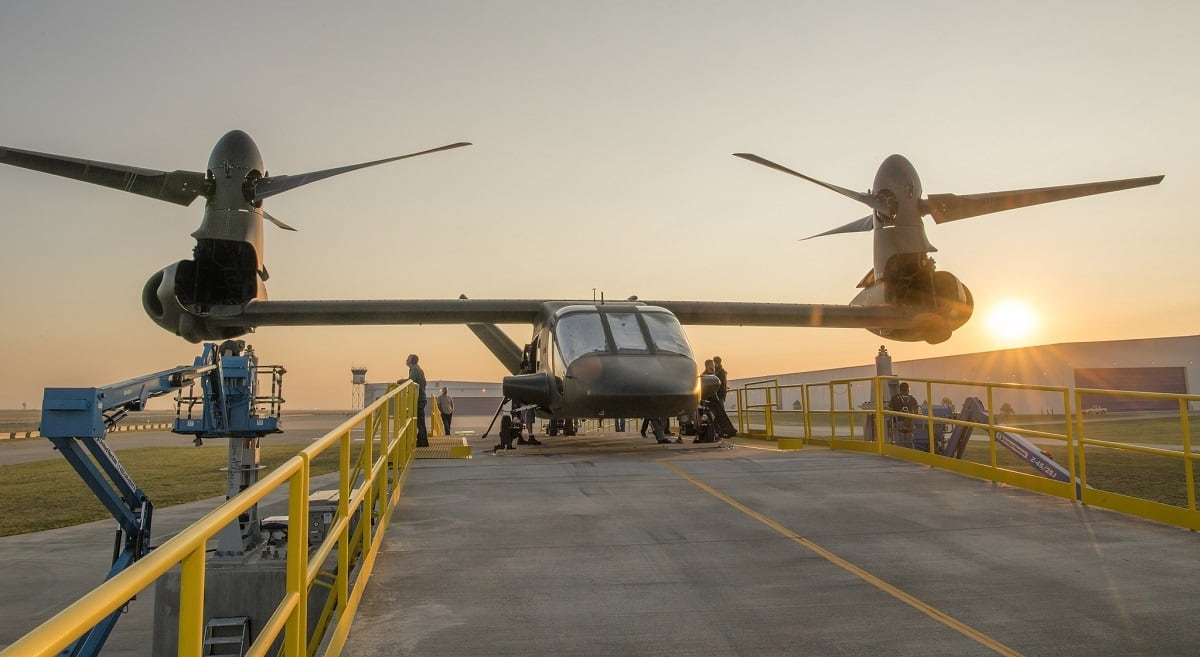NASHVILLE, Tenn. − The Army plans to accelerate the delivery of its first production-representative Future Long-Range Assault Aircraft to soldiers in 2028 by moving into low-rate production while still testing prototypes, Col. Jeffrey Poquette, the service’s FLRAA program manager, told Defense News.
Army leadership has tasked itself to accelerate the fielding of FLRAA as part of a newly debuted transformation initiative. And while speeding up any major procurement program contains substantial risk, Army aviation leaders and Textron’s Bell, the company chosen to build the service’s brand new advanced tiltrotor, say the program is unique in the sense that significant risk was driven down through digital design, engineering and a technology demonstration effort, where it flew the V-280 Valor tiltrotor for over 200 hours.
“Normally you would build prototypes, then you would go to test,” Poquette said. “And during test, you’re not doing a whole lot of building. You’re testing the aircraft and you’re building up a body of engineering work and results [ahead of] a Milestone C [production] decision.”
Typically, programs are in testing with prototypes for roughly two years prior to production decisions.
“We’re not going to accelerate testing. We’re not going to accelerate design,” he said. “They’re already very compressed, but what we can do is assume a little bit of risk and say, well maybe we can build aircraft during test.”
With the test effort going on in the background with the eight prototypes that will have already been built, Bell would begin building production aircraft, he said.
In 2027, the Army plans to make an early production decision ahead of Milestone C. The service is able to do so because there is already an option built into the current contract with Bell to exercise a low-rate production lot.
While concurrency — when a program chooses to produce systems before proving final design out through the testing program — has led to program delays and, in some cases, demise, Bell and the Army are confident this time is different.
Bell has assured the Army that it is “very confident” in its digital engineering to the point that, “although it may not be perfect, it’ll be pretty close,” Poquette said.
“It’s a continuation of production from our prototypes into early production representative aircraft,” Ryan Ehinger, Bell’s FLRAA program manager, said. “And it’s a second iteration. We did the [Joint Multirole Technology Demonstrator]. That was a one-off aircraft. We’ve been doing manufacturing development from then through now in some of these advanced manufacturing technologies and techniques.”
Bell also builds critical components like the wing, the blades and the gear boxes, he added.
“We’ve got our manufacturing technology center that has been iterating for years on some of these designs,” he said.
Another lever the Army plans to try to pull to accelerate fielding is completing full-rate production in four or five years rather than in seven or eight.
“What we’re asking Bell to do is build capacity faster to get to a full-rate production,” Poquette said. “That means we get a company a year earlier, but we get a battalion 18 months earlier and we get two battalions 30 months earlier.”
While the original plan was to conduct the initial operational test program in late FY31, the Army could also be able to enter that phase more quickly because it will already have aircraft built, according to Poquette.
The IOT&E could potentially begin in the FY28 or FY29 time period.
Jen Judson is an award-winning journalist covering land warfare for Defense News. She has also worked for Politico and Inside Defense. She holds a Master of Science degree in journalism from Boston University and a Bachelor of Arts degree from Kenyon College.
Read the full article here


